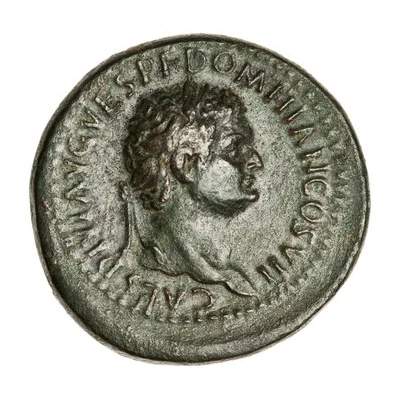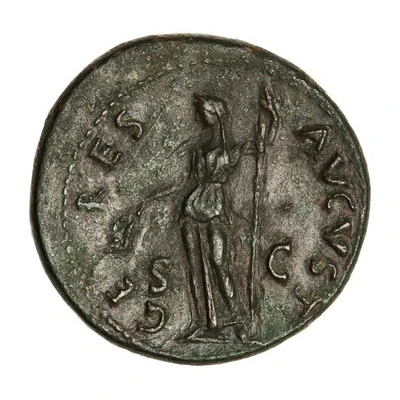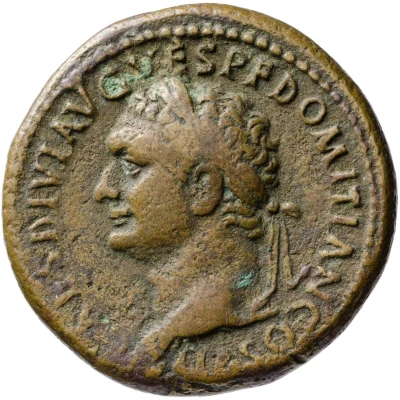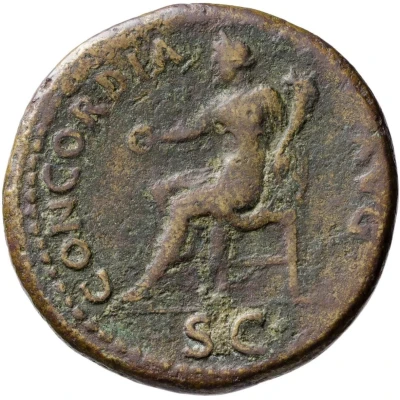Dupondius - Domitian CONCORD AVGVST S C; Concordia
| Bronze | - | - |
| Issuer | Rome › Roman Empire (27 BC - 395 AD) |
|---|---|
| Emperor | Titus (Titus Flavius Vespasianus) (79-81) |
| Type | Standard circulation coin |
| Years | 80-81 |
| Value | 1 Dupondius = ⅛ Denarius |
| Currency | Denarius, Reform of Augustus (27 BC – AD 215) |
| Composition | Bronze |
| Shape | Round (irregular) |
| Technique | Hammered |
| Demonetized | Yes |
| Updated | 2024-10-06 |
| Numista | N#251083 |
|---|---|
| Rarity index | 100% |
Reverse
Concordia seated left, holding patera and cornucopiae.
Script: Latin
Lettering: CONCORD AVGVST S C
Translation:
Concordia Augusta. Senatus Consultum.
Venerable harmony. Decree of the senate.
Comment
Source: Online Coins of the Roman Empire (OCRE)Interesting fact
The Dupondius was a bronze coin introduced by the Roman Empire during the reign of Emperor Domitian (81-96 AD). It was equivalent to two sestertii or one-fourth of a denarius, which was the standard silver coin of the time. The coin features an image of Concordia, the Roman goddess of harmony and unity, on the obverse (front side), and an image of the Roman Emperor Domitian on the reverse (back side). The inscription "CONCORD AVGVST S C" on the coin stands for "Concordia Augustorum," which means "Harmony of the Emperors." This coin was minted during a time when the Roman Empire was experiencing relative peace and stability under Domitian's rule, and the image of Concordia was meant to symbolize the unity and harmony of the Roman people.



